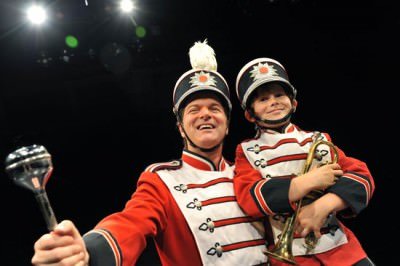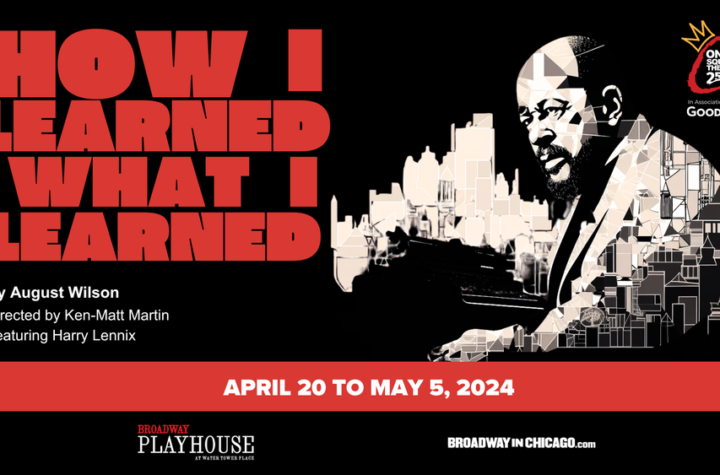
 [rating=3]Back in Merry Olde England when Shakespeare produced his original plays, able-bodied men played all of the roles, including those of the women. Today the Babes with Blades Theatre Company has created something of a turnabout in their performance of “Richard III.” While the traditional story is relatively untouched about the Duke of Gloucester who kills off his enemies strategically to eventually become King of England, it is the way the tale is being told that has created some buzz.
[rating=3]Back in Merry Olde England when Shakespeare produced his original plays, able-bodied men played all of the roles, including those of the women. Today the Babes with Blades Theatre Company has created something of a turnabout in their performance of “Richard III.” While the traditional story is relatively untouched about the Duke of Gloucester who kills off his enemies strategically to eventually become King of England, it is the way the tale is being told that has created some buzz.
The Babes with Blades Theatre Company has partnered with the University of Illinois Chicago (UIC) in a program called “Making Inclusive Theatre: ‘Richard III’ as Disability Art.” Not only is there non-traditional casting regarding sex and gender roles in this show (i.e., there are no actors on stage who identify as male), but there is also non-traditional casting regarding people with disabilities. According to historical accounts, King Richard III, the former Duke of Gloucester, had a physical disability, but what is less clearis its type. Traditionally, the actor playing Richard III is able-bodied and is cast a hunchback. In this production, however, Azskara Gilchrist, who plays the lead character is disabled herself. She is legally blind and on occasion walks with a foldable cane or holds onto a sighted actor. Seeing her in this role is marvelous! She beautifully and convincingly plays the role of a cutthroat, vile, yet silver-throated, aspirant to the throne. She makes the show—and, for that matter, so do the other actors with disabilities including Lauren Paige, who plays Queen Elizabeth .
Other actors in the show include Kristen Alesia (Lady Anne/Lord Hastings), Kim Fukawa (Catesby/King Edward IV), Madison Hill (Ratcliffe/Duke of York), Leah Nicole Huskey (Grey/Duchess of York), Kayla Marie Klammer (Lovell/Archbishop of Canterbury), Jillian Leff (Duke of Buckingham), Jennifer L. Mickelson (Duke of Clarence/Stanley/Mayor), Genesis Sanchez (Richmond), Symonne Stil (Dorset/Prince Edward), and perhaps my favorite, the self-defined queer actor Pat Roache, who plays an extraordinary Queen Margaret. Today’s program also included understudy Xela Rosas, who played the parts of Rivers, the Bishop of Ely, and the Messenger. What was sometimes problematic, however, was when one actor played several roles, and this would get a bit confusing to watch, especially if a character should die—and suddenly we see the same actor play another character shortly thereafter without much of a costume or makeup change. Having said that, what is wonderful about this show is its open captioning. The supertitles appear on a screen just above the stage, and this helps the audience tremendously in differentiating among the characters. It also allows us access to Shakespeare’s written text, which makes what the characters say much more understandable to our modern ears.
Director Richard Costes has done a great job adapting and shortening the presentation to suit a contemporary audience. What I especially liked was the inclusion of Tom Petty’s Song, “It’s Good to Be King” in the first act plus songs by Timber, Timbre in the second act. Music director Gail Gallagher makes it all possible, together with sound designer Jesse D. Irwin. Also, as the program states, “This production uses realistic staged violence in the telling of the story.” This turns out to be some of the best parts of the show, due to the hard work of fight director and intimacy director Maureen Yasko. While waiting for the show to start, we heard the actors going through their paces during their final “fight call”: this is essential so that swords and other weaponry are used in a safe manner and in a way that looks realistic to the audience.
Other technical aspects of the show are done well too. The costuming by kClare McKellaston is quite creative and consists of a hodgepodge of sorts: a combination of traditional dress from the 16th century with some modern touches plus some pieces (like a suit jacket) from the 20th century. The multilevel set design by Sydney Lynne is appropriate for the story and harkens back to five hundred years ago. It basically stays much the same throughout, but it is the lighting that changes throughout the show and differentiates among the various scenes, thanks to the work of lighting designer Becca Venable. One of the more unusual features of this production is that the young Prince Edward (not to be confused with King Edward IV) and the young Duke of York (not to be confused with the older York) are played by puppets, and these “children” are controlled by puppeteers in their gait, mannerisms, and speech. Kat Pleviak’s clever puppet design is responsible for this amusing addition to a mostly heavy show. Finally, text coach Carrie Hardin has worked with the actors to get them to speak in proper Shakespearean English, or, should I say, Elizabethan English.
As we watch the tale of “Shakespeare’s most complex, cruel, and fascinating protagonist” and his string of betrayals and murders, we begin to wonder: Why does anyone believe that they are superior to everybody else? Why do they feel entitled to do anything they wish to others with no conscience? The audience can only surmise why Richard has such an impulsive and dangerous need to gain and consolidate power at all costs. As we watch this show and witness his modus operandi—his trickery, mockery, blackmail, manipulation, and treachery—we wonder why so many characters want to believe the best of him and cannot see past his lies, deceit, and narcissism. Why would so many people clamor to his defense, if not outrightly support him as their leader? Later on, we see a pique of conscience when King Richard has a dream that foretells his ultimate defeat in war. But by then, the die has been cast. And far too many have died.
While this is not a thoroughly modern version of the play, it is not a traditional one either. This collaboration of Babes with Blades and the University of Illinois Chicago’s Disability Cultural Center, and the UIC Department of Theatre and Bodies of Work makes this Shakespearean drama a unique hybrid. It is meant to be inclusive of persons who might not have otherwise performed on stage in these roles, such as when women are paired with physical violence and violent acts. The show thus can enlighten us not just about British history but also about the truth of our own times: having to do with national and international politics as well as the politics of inclusion, having to do with sex, gender, and disability.
The Babes with Blades production of “Richard III” is playing through October 15, 2022, at the Edge Theatre, 5451 N. Broadway Avenue, in Chicago.
Tickets are $20 – $35 and are on sale at https://BabesWithBlades.org.
Performance schedule:
 Thursdays, Fridays, and Saturdays – 8:00 p.m.
Thursdays, Fridays, and Saturdays – 8:00 p.m.
Sundays – 3:00 p.m.
All performances are presented with open captioning.
Streaming is available on Saturday, September 10 at 8:00 p.m., Friday September 23 at 8:00 p.m., and Sunday, September 25, at 3:00 p.m.
Note that COVID restrictions are still in effect. You will be asked to show a vaccination card and matching ID. You will also be required to wear a mask covering your nose and mouth while indoors, except when actively eating or drinking.
To see what others are saying, visit www.theatreinchicago.com, go to Review Round-Up and click at “Richard III”.






More Stories
“Barefoot in the Park”
“Joe Turner’s Come and Gone”
“How I Learned What I Learned” reviewed by Julia W. Rath